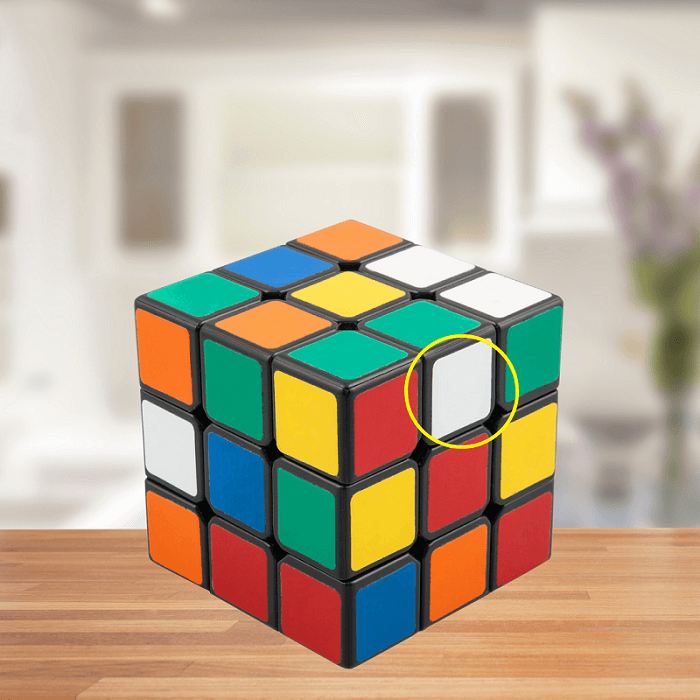Ah, the Rubik’s cube. One of the few toys that is suited for all ages, but did you know that solving the popular handheld puzzle involves both strategy and math? Using the mathematical concept of basic group theory to tackle this difficult challenge is the greatest technique you have at your disposal. In addition to this puzzle, group theory has been shown to be beneficial in physics, chemistry, and computer science.
In chemistry, we see group theory being helpful with vibrational spectroscopy, electronic transitions, and more. Group theory is applicable in physics specifically in regards to quantum field theory, crystallography, quantum mechanics, and more. Do not underestimate the complexity and importance of this mathematical concept, as it does more than just help solve the Rubik’s cube puzzle.
History of the Rubik’s Cube
The Rubik’s Cube is a 6-sided cube with 9 individual pieces on each side that are commonly referred to as “cubies”. Each side is one solid color and the point of the puzzle in its unsolved state is to rotate the rows and cubies to get each side back to the full color. The design was created in 1974 by engineer Erno Rubik from Budapest, Hungary. He built the toy puzzle in his mother’s apartment completely unaware of the popularity it would gain.
Rubik was inspired by the 15 Puzzle which was invented in the late 1870’s. Erno Rubik’s cube was originally named the Magic Cube, or Buvuos Kochka in Hungarian. The puzzle was later renamed to honor its creator. There have been many different variations of this puzzle, but the current one is 6-sided, with 3 rows and 3 columns per side, showing 9 individual cubies. There is no doubt this simple-looking puzzle has become a huge success.
Mathematical Approach
The Rubik’s cube has been used in college math courses to teach group theory. This concept is under the branch of algebra that is geometric symmetry. Group theory is the study of groups, which is essentially a set of elements that are present – relations and generators. For a Rubik’s Cube, generators are the basic moves that can be applied to change its configuration, like turning one of the six faces 90 degrees clockwise or counterclockwise. Relations explain how these moves interact with each other and the cube configurations as a result of those moves.
To solve a Rubik’s Cube using group theory, first find the group of cube configurations and moves, which is commonly abbreviated G. This group consists of all potential cube locations as well as transformations (moves) that can be performed on the cube, each of which corresponds to a group element.

To assist with the mathematical strategy, it is best to label each row and column as the puzzle faces you: front (F), right (R), down (D), up (U), left (L), and back (B). Each individual cubie can be labeled using its location in regards to which row(s) and column(s) they are in. For example, the white cubie in the image could be labeled as UR for Upper Right.
In group theory, cosets are sets generated by multiplying one of a group’s subgroups by another member. Cosets in Rubik’s Cube are sets of cube configurations that can be generated from a beginning configuration by a series of moves. Subgroups of the cube group are collections of cube configurations that can be obtained using a subset of all possible moves.
A group homomorphism is a mapping between two groups that keeps their group structures. In the context of Rubik’s Cube, a group homomorphism could represent a way of solving the problem by converting cube configurations to a simpler group with well-known properties. Using group theory, one can develop algorithms and approaches for solving the Rubik’s Cube.
These algorithms use the cube group’s symmetries and attributes to navigate through its configurations and come to a solved state. For example, the CFOP technique (Cross, F2L, OLL, PLL) is a popular strategy that divides the problem into many stages, each of which corresponds to a subset of cube configurations.
At Online Math Center
Mathematics is a crucial subject in school, but oftentimes forgotten of its importance in even the fun parts of life like puzzles. Understanding concepts like group theory find to be beneficial in areas outside of math like puzzles, physics, chemistry, and computer science.
Contact OMC now to ensure that your child understands mathematical topics such as group theory and can apply them to real-world ideas such as Rubik’s cube. At OMC, students can improve their core skills through classes and tutoring. With two difficulty levels every grade, OMC strives to progress each student as far as possible in mathematics and beyond.